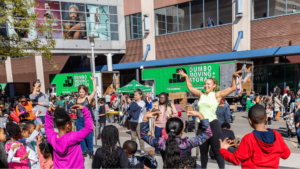You spent a significant amount of money and time putting together an event attendees loved — from carefully curated panels to a star-studded speaker lineup. Wouldn’t be nice if you could squeeze more ROI out of your efforts? Or better yet — retain your attendees and drive new registrations for your next event?
Spoiler alert: it’s not just possible, it’s within your reach.
Your event may have a fixed time and place, but that doesn’t mean your event content — like event photography or session recordings — has a shelf life. In fact, there are a number of ways you can leverage the content from your conference, summit, or workshop.
Here are six types of event content and how to use them to keep attendees engaged between events:
1. Professional Event Photography
Hire a professional photographer or appoint an aspiring photographer from your event staff to capture the zeitgeist of your event. Images that capture the attendee perspective more accurately represent the event experience. So make sure they get group photos of attendees networking and interacting with sponsors at your event.
Once the event ends, post a gallery on social media and invite attendees to check them out in your thank you email. Event photography reminds your attendees how great your event was — and can help you sell registrations to hesitant buyers in the future. In fact, our research shows Google’s image search to be the second most popular website attendees bounce to after visiting an event listing.
2. Highlight Reel of Past Events
Create a video that highlights key moments from your past event. Make sure to show the energy on stage, in the crowd, and behind the scenes. Past attendees will be reminded of the value gained from attending your event. These montages also give interested event-goers a glimpse into the event experience, which is a key part of their decision-making process.
3. Video Testimonials
It’s no secret: people look to others’ actions and opinions to inform their decisions. Studies show that 70% of consumers look at product reviews before making a purchase, and product reviews are 12x more trusted than product descriptions from manufacturers. Which is why a video testimonial from past attendees — or even influential speakers — can add a little social proof to your event promotion.
As with many of these suggestions, you’ll want to be proactive and capture these testimonials during your event. Make them available to potential attendees visiting your event website and social media accounts.
4. Recorded Presentations and Panels
One of the most common forms of conference content is video of presentations or panels. Consider releasing these videos one by one at a steady cadence to keep remind your attendees of the valuable insight they got at your event — and show non-attendees what they missed. If you decide to release them all at once, coincide your release with an announcement for open registration to boost sales.
5. Repackaged Presentation Content
Your presentations don’t just have to live on as videos. Package your presentations in a variety of formats to get more out of them — and give your attendees more options. Turn them into infographics, blog posts that summarize the most important takeaways, or use their audio for podcasts that people can listen to at the gym.
One other way to get more mileage out of your past event’s speaker presentations is to share compelling quotes on Facebook or Instagram. Just make sure to include a link to the full presentation for those who want to consume more content. Here’s an example using a recorded webinar:
6. Upcoming Speaker and Presenter Bios
You can also use content to build anticipation around the speakers and presenters at your upcoming event. Announcing your agenda and speaker lineup is a great chance to engage your audience, but a grid of headshots and notable brands can only drum up so much excitement. Craft speaker and presenter bios so that would-be attendees can better understand the value each will provide. Share links to content they’ve published (other presentations, blog posts, and articles) that add credibility and give your audience a sense of what they’ll learn.
Sharing your event content is a great way to maintain momentum after your event has ended, demonstrate the value of attending your next event, and engage your attendees online.
For more ideas on promoting your event online, check out The 10 Best Ways to Promote Your Event Online.






